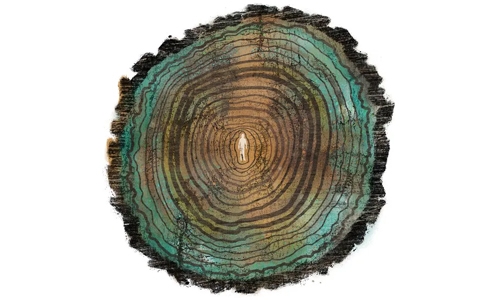A forest of ancient trees, poisoned by rising seas
Bear Swamp is a forest of 400- and 500-year-old black gums, some of the oldest trees in eastern North America, along the Delaware Bay in southeastern New Jersey. The trees have begun to die. The cause is the rising sea, which is making the groundwater at the base of the forest saltier. The trees are doomed. Much of the Glades Wildlife Refuge, which contains the forest, eventually will be under water. Though I live only 55 miles away, I’ve never seen the forest nor had I heard of its old-growth trees until I read about them recently in The Philadelphia Inquirer. This knowledge was enough to make me grieve for the world that is vanishing before us.
Earth is rapidly shedding life and the systems that sustain it. We know this but we don’t seem to be able to face it, for ours is an age of loss disguised as plenty. The article about the black gum trees of Bear Swamp prompted me to make a list of other recent examples of ecological loss. The last few months have been full of them. The World Wildlife Fund, for example, recently reported an average population decline of mammals, amphibians, birds and fish of 60 percent since 1970, the year after I was born. Scientists have discovered a 75 per cent drop in the number of flying insects in protected areas of Germany since the 1980s.
Ecologists observing El Yunque, the Puerto Rican tropical rain forest, recently found 60 times fewer invertebrates in their sticky traps than they had in 1976 — and this was measured before Hurricane Maria, which devastated the forest. The destruction of world forests hit records in 2016 and 2017; this year looks even worse after the California wildfires. As the Times reported recently, the epic forests of Borneo, and their absurd abundance, are now at bulldozer’s edge as the Indonesian government allows them to be plowed under for palm plantations. Simultaneously, indigenous peoples of the Amazon are on the run as logging and mining interests dig and burn with impunity. The destruction of these forests releases stored carbon dioxide into the atmosphere.
Deforestation is now a significant global source of carbon dioxide, the principal greenhouse gas that is warming the planet. Warming has caused a loss of 95 percent of the oldest and thickest ice in the Arctic over the last three decades, according to a report this month by the National Oceanic and Atmospheric Administration. The ice of western Greenland is melting at its highest rate in 400 years, contributing to rising seas. NASA recently reported that the largest glacier in East Antarctica is retreating “with the potential to reshape coastlines around the world.” Warming ocean waters have killed fully half of the coral in the Great Barrier Reef since 2016, a paper in the journal Nature found. From two million living corals, some hundreds of years old, now there are a million.
Reefs, along with forests, are the fundamental ecosystems of the planet. The Department of Homeland Security will substantially destroy the nation’s richest butterfly refuge beginning in July when it builds a 33-mile section of border wall in the lower Rio Grande Valley. The Supreme Court this month declined to hear a challenge to the Trump administration’s executive decree exempting Mexican border wall projects from environmental regulations. Some 240 species of butterflies and over 300 species of birds depend on the refuge. About 60 percent of global primate species face extinction, according to a report last year in the journal Science Advances.
Most people no doubt would like to think all this harm isn’t harm to us, that we can take and nothing will be taken. But all life on the earth is interconnected. We depend on the ecological systems that are fiercely unraveling. If the trees of the Bear Swamp forest are doomed, so perhaps are we. This age of loss will really be a time of consequences. I’m not convinced anyone is prepared. As soon as I read about the black gum trees, some of them so old they existed before Europeans arrived in the region, I began to make plans to go see them before they die. This hidden and ancient swamp seems as alluring, and sublime, as the view from a mountain peak. But my desire is really more melancholic: to grieve over what’s to come
Related Posts

